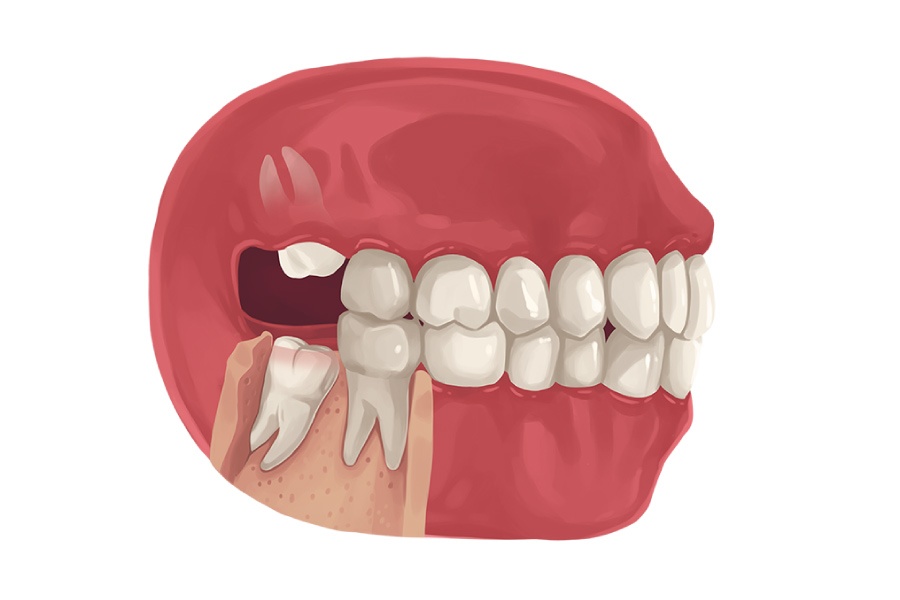
Wisdom teeth, also known as “third molars,” are found in your upper and lower jaw. For most people, wisdom teeth come in sometime between 17 and 25 years old, but they can come in later. Wisdom teeth can cause problems, so many people need to get them removed.
What Are the Signs That It’s Time?
Sign #1: Swelling, red gums
Sign #2: Discomfort or pain in your gums and jaw
Sign #3: Shifting teeth
Sign #4: Bad breath
Sign #5: Sinus issues
When your wisdom teeth first start erupting, the process aggravates your gums. You’ll likely experience swelling and redness. The inflammation can be a little tender, maybe painful, but you may not feel much at first.
Any time you feel pain, it’s your body trying to tell you something. Pain in your gums, jaw, and toward the back of your mouth can mean your wisdom teeth are on the move. You might feel discomfort when you chew, as well.
When your wisdom teeth come in, they can push and crowd against your other teeth. They might even cause damage as they try to fit in. If you notice your bite feels different or your teeth aren’t as straight as they used to be, it could be because of your wisdom teeth.
As wisdom teeth start emerging, they can create a gum flap next to the tooth. A flap is a perfect place for food and bacteria to accumulate. This encourages tooth decay and bad breath.
While sinus problems aren’t the most common sign, some people do experience them. The wisdom teeth that grow in your upper jaw put pressure on the sinuses. You might feel pain and congestion. Infections can spread to the sinuses, too.
Getting Your Wisdom Teeth Removed at Southbridge Dental Care
If you’re noticing any of these signs, please visit our Southbridge office so we can do an X-ray and see what’s going on. Dr. Park and the team do wisdom teeth extractions all the time; it’s a very routine surgery. On your side, preparing for oral surgery isn’t complicated. We will always guide you through the process. Contact us today if you have any questions or concerns!
